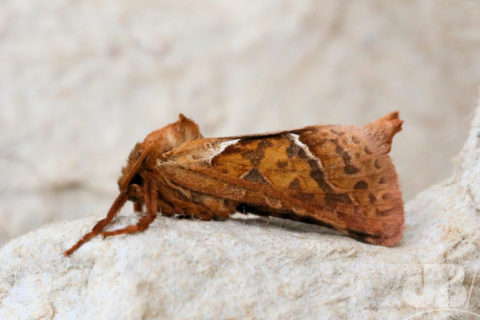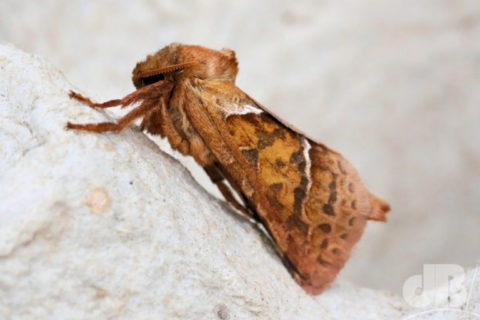Orange Swift (Triodia sylvina) – A first for the garden 13th August 2018 in three weeks or so of moth-ing with Rob’s homemade actinic Robinson trap.

Given how brightly coloured this specimen is compared to other photos of the species on UKMoths, for instance, I am assuming it is a male. The males are also smaller than the females, such sexual dimorphism does not seem to be a common trait in the moth world, although it does occur (viz some females are wingless and the Emperor Moth females are like a desaturated version of the male). The species is a member of the Hepialidae of which there are, it seems, only five members in the UK: Orange Swift (Triodia sylvina), Common Swift (Korscheltellus lupulina), Map-winged Swift (Korscheltellus fusconebulosa), Gold Swift (Phymatopus hecta), and the Ghost Moth (Hepialus humuli). Update: 11 May 2019, first Common Swift to the trap. Not seen any of these others yet.

The Orange Swift flies later in the year than the other Swifts, July-September (in the British Isles), so spotting one in the middle of August is about right, although UKMoths explains that it inhabits waste ground, moorland, and other wild places. Doesn’t say much for my gardening skills.
The larvae (caterpillars) feed on the roots of bracken, dandelion, dock, hop, and viper’s bugloss. It overwinters twice as a larva.